VietNamNet reporter had an interview with Dr. Can Van Luc, Chief Economist of BIDV Bank, Member of the National Financial and Monetary Policy Advisory Council on this issue.
Reporter: Sir, although GDP growth in 2023 did not reach the initial target of 6-6.5%, this is still a high growth rate compared to the region and the world. Do you think this growth rate accurately reflects the current economic situation in Vietnam in 2023?
Dr. Can Van Luc: The growth rate of 5.05% is relatively low compared to previous years and compared to the initial target. However, this figure demonstrates the great efforts of the entire system when in 2023, the challenges, difficulties, and risks both internally and externally are very large, beyond forecast and unpredictable.
In particular, global demand for consumption and investment has decreased, and the global financial, monetary, and real estate markets are facing many risks and difficulties, in the context of high global inflation and interest rates.
Over the past year, both the National Assembly and the Government have been very resolute, issuing many policies to support people, businesses and the economy. The economy has clearly recovered since the beginning of the third quarter, as shown by the figures of each quarter being higher than the previous quarter (growth in the first quarter was 3.41%, the second quarter was 4.25%, the third quarter was 5.47% and the fourth quarter was 6.72%).

Expert Can Van Luc assessed that the growth target of 6 - 6.5% in 2024 is feasible.
Growth drivers such as exports, investment, and consumption are gradually recovering, albeit slowly. Inflation is relatively well controlled (average increase of 3.25%) while global inflation is about 5.5% even though the money supply in 2023 is double that of 2022, mainly due to our good control of the supply and prices of essential goods such as gasoline, food, housing, construction materials, etc.
FDI attraction has recovered impressively, increasing by 32.1% in registered and additional capital, and 3.5% in realized capital in the context of global FDI capital flows decreasing by about 2% in 2023. Public investment is also a bright spot, completing about 85% of the plan, up about 21% over the same period. Hopefully, by the end of January 2024 - the usual pillow month - public investment disbursement will reach the target of 95% as set by the Prime Minister.
Major balances of the economy such as export-import balance, budget revenue-expenditure, labor supply-demand... are guaranteed, fiscal risks (public debt, foreign debt, budget deficit, government debt repayment obligations...) are at an average level. Interest rates are gradually decreasing, the basic exchange rate is stable. This is highly appreciated internationally and therefore, Fitch Ratings upgraded Vietnam's credit rating to BB+ and assessed the outlook as "stable".
Next, Vietnam's digital economy, green economy, circular economy and energy transition have made positive progress; in which Vietnam's digital economic growth in the 2023-2025 period is forecast to be about 20%/year, the highest in the ASEAN region (according to Google & Temasek 2023). Attracting green finance has achieved important initial results.
Foreign affairs and international integration have achieved many important results, especially high-level visits, associated with upgrading comprehensive strategic partnerships with a number of major partners, creating a foundation to better exploit opportunities in trade, investment, tourism, climate change response, innovation, etc. in the coming time.
In 2023, one of the important reasons promoting the above recovery is that the National Assembly and the Government have issued many mechanisms and policies to remove difficulties and obstacles for areas such as healthcare, public investment, land, construction, real estate, tourism and planning... Many regional and provincial planning have been issued; many important laws such as the Housing Law, the amended Law on Real Estate Business, the Law on Prices, the amended Law on Electricity Transactions... have been passed and soon the Land Law, the amended Law on Credit Institutions... These will be important legal foundations and frameworks, creating the basis for safer, healthier and more sustainable development in the coming time.
However, there are still many challenges and difficulties.
These are huge external risks, related to geopolitics, financial risks, public debt, global private debt; energy and food security; unusual climate change... These factors continue to strongly impact world demand, and will certainly impact Vietnam's exports, investment and tourism in the coming time.
Although import-export activities are recovering, they are still decreasing. The total import-export turnover for the year decreased by about 6.6%, of which, exports decreased by 4.4%. This is noteworthy because Vietnam's exports rarely decrease; perhaps this is the first year since 2011 that exports have decreased.
Accordingly, industrial production linked to exports is recovering but slowly, with an annual increase of only about 3% - the lowest level since 2011. Budget revenue has decreased, with an annual decrease of about 5.4%, a deep decrease that is also rare, making fiscal space tighter.
Enterprises still face many difficulties in terms of legality, cash flow, and increased input costs while output recovers slowly; especially the widespread fear of mistakes and responsibility among civil servants remains a major obstacle. The number of enterprises temporarily closed or suspended still increased by 20.7% compared to the same period.
Institutional improvement related to new growth drivers such as green economy, digital economy, circular economy, and energy transition is still slow. In particular, economic restructuring, especially weak projects, weak enterprises and credit institutions, is still slower than required.
Private investment increased quite low, only 2.7% for the whole year; normally this figure should increase 2-3 times.
The bond market, real estate market, and gold market still have many risks; requiring more drastic measures in the coming time.
Finally, growth quality has not improved as labor productivity increased slowly (only 3.65%, lower than 4.8% in 2022 and quite far from the 2021-2025 plan of 6.5%/year); TFP's contribution to growth is estimated at 44% (equivalent to 2022), lower than the average of 45.7% in the 2016-2020 period and the target of 45% in the 2021-2025 period.

Experts "suggest" 6 solutions to successfully implement socio-economic development goals in 2024. (Photo: Hoang Ha)
- With the Government's solutions to overcome difficulties in the corporate bond and real estate markets, along with efforts to promote public investment, what do you think the economic picture will be like in 2024?
I think that for the world, in 2024, the growth rate is not expected to be the same as in 2023, it will be flat or decrease. The main reason is that the US and Chinese economies in 2024 are expected to grow slower than last year, while the economies of Europe, Japan, and the UK may recover better, but not significantly.
Therefore, although the world's demand for imports and exports, investment and consumption has recovered well, it is still weak. Accordingly, Vietnam's traditional growth drivers such as exports, investment (especially private investment), and consumption continue to recover, but will be slow and the growth rate will not be equal to the period before the Covid-19 pandemic. If we consider the supply side, agriculture maintains a good growth momentum, but the recovery of industry and some service sectors is still slow.
Therefore, it is forecasted that in 2024, Vietnam can grow by 6 - 6.5%; inflation will be controlled at 3.5 - 4%. These targets are feasible when growth drivers are recovering positively and it is hoped that Vietnam will better promote new growth drivers such as digital economy, green economy, energy conversion, regional connectivity and increased labor productivity...
If the above important laws are passed, they will gradually begin to be implemented next year, which will have a positive impact on businesses and the market. Confidence in the real estate market and corporate bonds is expected to recover better.
- So, what are the solutions and policies to successfully implement the socio-economic development goals in 2024, sir?
In my opinion, we need to focus more strongly on 6 main groups of solutions.
First, by 2024, we must be more drastic in improving the investment and business environment, especially in relation to public service implementation; there needs to be a breakthrough, otherwise it will be very difficult.
Second, promoting the recovery of traditional growth drivers along with better promoting the new growth drivers mentioned above. In particular, it is necessary to better exploit the signed FTAs, the opportunities obtained in upgrading the recent strategic partnership; and develop the digital economy and green economy in a systematic, substantial and strategic manner.
Third, firmly ensure macroeconomic stability in the context of many external and internal risks and challenges; do not be subjective with energy security, food security, proactively adapt to climate change, etc.
Fourth, pay more attention to the process of restructuring the economy, especially weak enterprises and credit institutions. If this process is not resolutely resolved and accelerated, it will cause congestion, because these are the "blood clots", leading to ineffective resource allocation and high costs.
Fifth, we must quickly accelerate and perfect economic institutions, especially those for new growth drivers such as digital economy, green economy, circular economy, and energy transition; better implement planning and implement issued plans. In particular, the economy in general and localities in particular need to calculate and harmonize short-term and long-term goals, policies and strategies, and longer-term policies, not just focusing on immediate issues. This is also a way for us to increase the resilience of the economy.
Finally, to do the above, the issue of improving growth quality is both the goal and the foundation. Accordingly, the task of increasing labor productivity associated with strong reform of administrative procedures, application of science and technology, reform of recruitment mechanism - evaluation of cadres - salaries of civil servants is urgent.
Thank you!
Source: vietnamnet
Source


![[Photo] Lam Dong: Panoramic view of Lien Khuong waterfall rolling like never before](/_next/image?url=https%3A%2F%2Fvphoto.vietnam.vn%2Fthumb%2F1200x675%2Fvietnam%2Fresource%2FIMAGE%2F2025%2F11%2F20%2F1763633331783_lk7-jpg.webp&w=3840&q=75)

![[Photo] National Assembly Chairman Tran Thanh Man holds talks with South Korean National Assembly Chairman Woo Won Shik](/_next/image?url=https%3A%2F%2Fvphoto.vietnam.vn%2Fthumb%2F1200x675%2Fvietnam%2Fresource%2FIMAGE%2F2025%2F11%2F20%2F1763629724919_hq-5175-jpg.webp&w=3840&q=75)
![[Photo] President Luong Cuong receives President of the Senate of the Czech Republic Milos Vystrcil](/_next/image?url=https%3A%2F%2Fvphoto.vietnam.vn%2Fthumb%2F1200x675%2Fvietnam%2Fresource%2FIMAGE%2F2025%2F11%2F20%2F1763629737266_ndo_br_1-jpg.webp&w=3840&q=75)




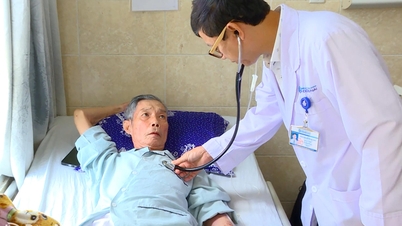

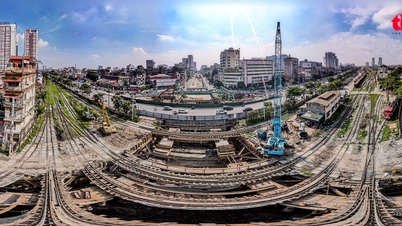







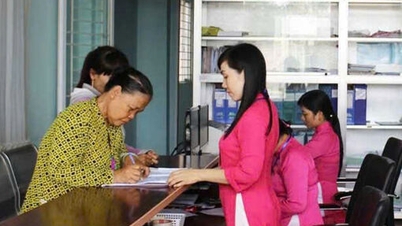




















































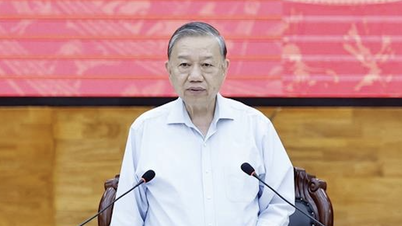


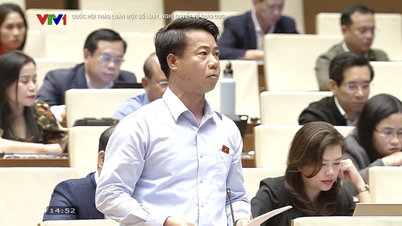












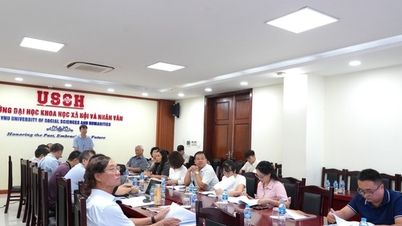
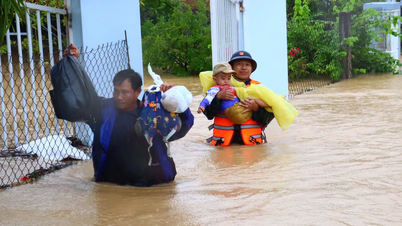


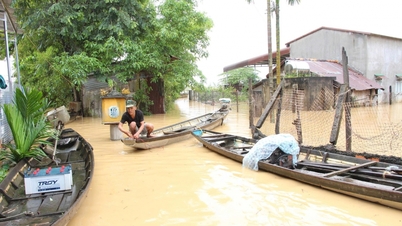



















Comment (0)